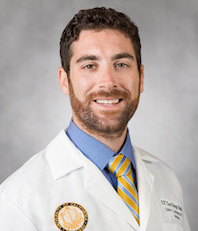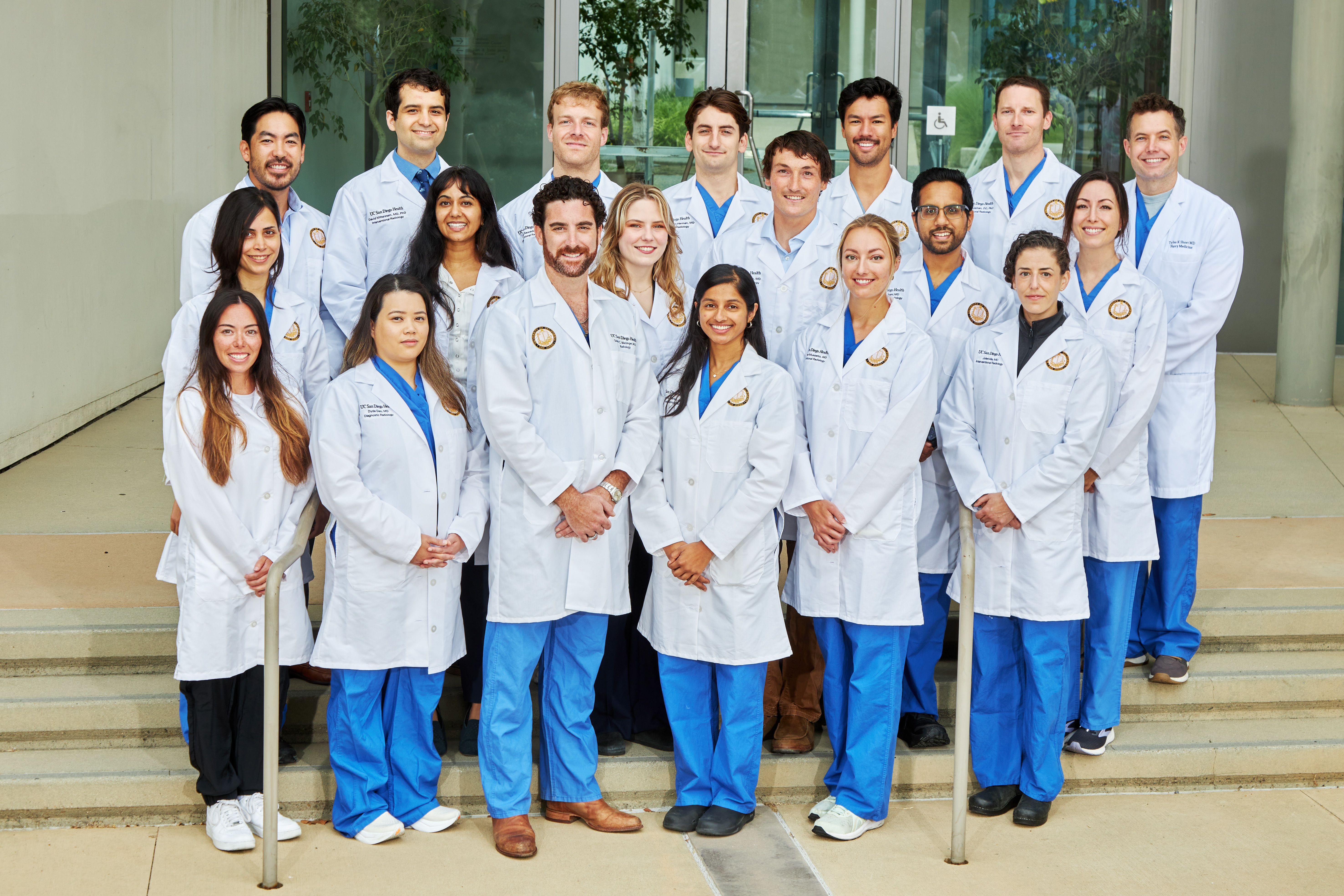About the Programs
- 4-Year Diagnostic Radiology Residency
- 5-Year Clinician Scientist Radiology Residency
- Integrated Interventional Radiology Residency
The American Board of Medical Specialties (ABMS) now recognizes Interventional Radiology (IR) as a distinct, stand-alone medical specialty, and the Accreditation Council for Graduate Medical Education (ACGME) has established program requirements for this new specialty. Our program obtained accreditation in 2016 and we offer 2 positions in the National Residency Matching Program (NRMP) MATCH. Medical students who know they want to specialize in Interventional Radiology (IR) may apply to the Integrated Interventional Radiology Residency Program at UCSD.
There are two ACGME-approved positions available in our Integrated Interventional Radiology Residency (IR) Program per year. The program is 5 years in length and focuses on diagnostic radiology during the first 3 years ( see 4-Year Diagnostic Radiology Residency) and interventional radiology during the final 2 years. We also offer a unique 6-year IR research track through the Clinician-Scientist Radiology Residency Program (CSRRP), designed to train and inspire IR physician-scientists to pursue substantive IR-related research. Graduates of the IR-Integrated Residency qualify to take the Interventional Radiology/Diagnostic Radiology examination offered by the American Board of Radiology (ABR).
During the 2-year training in Interventional Radiology, the UC San Diego IR resident is exposed to the clinical framework within which interventional radiology is practiced. The development of clinical skills, understanding of procedural indications, pre-operative and post-operative patient management, and proper identification and handling of complications are integral components of the training. Vascular imaging is an integral part of the training program. There are ample opportunities to engage in research during the residency. In addition, residents can rotate in various clinical services such as ICU, Oncology, Vascular Surgery, Urology, Neurosurgery, Nephrology, Neurointerventional Radiology, among others. The UCSD IR Division participates in outpatient clinics, hospital admissions, and inpatient consultations as part of its clinical service.
The Division of Vascular and Interventional Radiology at UC San Diego consists of 13 core, full-time interventional radiology faculty with 7 physician extenders. Additionally, there are 15 adjunct IR faculty within other divisions and at other sites.
There are 12 interventional suites located at 4 hospitals: UC San Diego Medical Center at Hillcrest, UC San Diego Medical Center La Jolla Campus (Thornton Pavilion and Jacobs Medical Center), and the VA San Diego Healthcare System. In addition, residents rotate through Kaiser Permanente San Diego and Rady Children's Hospital.
At a minimum, residents should have the following experience over the course of four years:
Integrated IR residents (including IR/T32 residents) will frontload their Night Float months with 8 weeks in the R2 year and 8 weeks as an R3. They will also have 10 additional months of IR (which includes an ICU month) mostly in the R4 year.

Quinn C. Meisinger, MD
Program Director, Interventional Radiology Integrated & Independent Residencies
Associate Professor of Interventional Radiology

Rupal Parikh, MD
Assosciate Program Director, Interventional Radiology Integrated & Independent Residencies
Assistant Professor of Interventional Radiology
Medical students who know they want to specialize in Interventional Radiology may apply to the UCSD Integrated Interventional Radiology Residency Program. The Integrated IR Program is considered an advanced program that starts at the PGY-2 level. For an internship, we encourage medical students to apply to a strong internship in Medicine or Surgery. The program has no preference on geographical location of your internship. For more information check our Application Process page.
Contact us with questions about our residency and your application!

Juliet Alla, MD
Interventional Radiology Chief Resident

Mansur Ghani, MD
Interventional Radiology Chief Resident

Brian Andrew, MD
Independent Chief Resident

In accordance with applicable Federal and State law and University policy, the University of California does not discriminate, or grant preferences, on the basis of race, color, national origin, religion, sex, disability, and/or other protected categories.